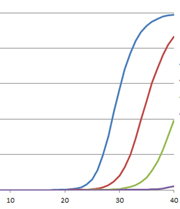The polymerase chain reaction (PCR) has revolutionized modern biology as a quick and easy way to generate amazing amounts of genomic data. However, when PCR doesn’t work, it can be frustrating. At these times, PCR and reverse transcription PCR (RT-PCR) inhibitors seem to be everywhere: They lie dormant in your starting material and can co-purify with the template of interest, and they can be introduced during sample handling or reaction setup. The effects of these inhibitors can range from partial inhibition and underestimation of the target nucleic acid amount to complete amplification failure. What is a scientist to do?
Continue reading “Dealing with PCR Inhibitors”webinar
Preventing the Heartache of Cell Line Misidentification
It’s a scientist’s nightmare: Spending time and resources to investigate a biological phenomenon only to learn later that your cells are not what you think they are—their true identities hidden. As a result, all of the data that you’ve generated with those cells, published and unpublished, are cast into doubt. You thought that you knew your cells, that you could trust them, but your trust was misplaced. At some point, perhaps even before the traitorous cell line entered your laboratory, the cells were mislabeled, misidentified or contaminated with another cell line. It didn’t have to be this way. There are easy steps you can take to prevent the headache and heartache of cell line misidentification and contamination.
Continue reading “Preventing the Heartache of Cell Line Misidentification”

